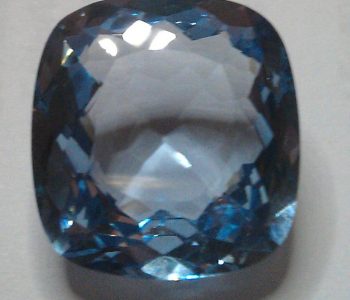 Silversmithing and Jewellery Making
Silversmithing and Jewellery Making
Mohs’ scale of hardness
Mohs’ scale of hardness was invented over 200 years ago as a pretty simple way of describing the toughness of rocks, minerals and gemstones. The German Geologist Freidrich Mohs devised the system based on the ability of harder stones to scratch softer ones. This means that it tests the abrasive resistance against other materials. Because of the scratches that are made, this testing process is deemed to be destructive in that, by definition, the weaker stone is damaged. For this reason, Mohs’ scale of hardness is only really useful for field testing or testing of rough, uncut and unpolished material. The higher the number the harder the material: The softest material on the scale is Talc at number one and proceeds through to the toughest, Diamond at number 10.
Knowing the Mohs’ hardness of a material can help with deciding how best to incorporate it into jewellery. For example; stones that are soft will rapidly show signs of wear if they are placed into rings that are worn on a daily basis. If we bear in mind that a common constituent of household dust is small particles of quartz sand. Quartz has a Mohs’ scale of 7 so stones with a hardness of less than 7 will show more signs of wear than stones that are harder than 7. So knowing a stone’s hardness can prove useful, and fortunately the majority of books that tell us about gemstones include in their description the stones’ hardness.
The classic list of for Moh’s scale of hardness lists the following stones:
- Talc
- Gypsum (Fingernail 2 – 2.5)
- Calcite (Copper 3)
- Fluorite (Nail 4)
- Apatite (Knife blade 5 -6.5)
- Orthoclase (Feldspars eg Moonstone, Sunstone and Labradorite)
- Quartz
- Topaz
- Corundum (Ruby and Sapphire)
- Diamond
Unfortunately the difference in hardness between each of the numbers is not the same. For example the difference in hardness between Calcite and Fluorite (3 and 4 on the scale) is approximately 25% whereas Diamond is approximately 300% harder than Ruby or Sapphire.
So how can we easily remember the names of the rocks on Mohs’ Scale? The following Mnemonic might be helpful: The Gem Club From Adelaide Often Queues To Cut Diamond


